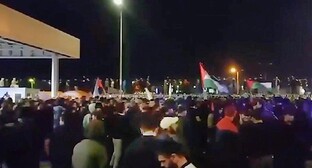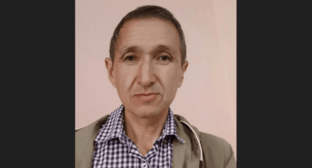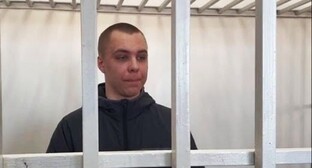22 May 2006, 14:06
Alexander Cherkasov: "Disproportionate and unselective use of force takes place in North Caucasus"
This morning, rubbles have started to be removed on the place of the operation in Khasavyurt on the liquidation of militants. "This morning rubbles have started to be removed on the place of the building where the operation was held," reports the Dagestan MIA alert unit. According to our source, the roof of the building went down completely.
For reference, on Sunday, May 21, two members of illegal armed units were blocked in the Dagestan town of Khasavyurt and an operation on their capture or liquidation was carried out.
In another Dagestan town of Kizilyurt the damage inflicted by the May 16 operation on liquidation of two militants is being assessed. According to Makagadji Idrisov, deputy-head of Kizilyurt administration, everything has burnt out in 12 flats of the house where combat action was going on, reports "Gazeta.Ru." The doors and windows are broken, the walls are destroyed. There are 20-40 mm through holes in the concrete slabs of the panel house between the ground and the first floors. In the course of fire extinguishing, water was coming down to the lower floor flats and they are flooded. 61 persons have lost their shelter. Part of them stay with their relatives, while 40 persons have been placed in the Centre for rehabilitation of disabled children. Experts are assessing the damage.
Has such use of force been justified during the special operation on the liquidation of militants? What must simple people do when their homes or flats have been destroyed, how they can get compensation of the damage, relates Alexander Cherkasov, member of the "Memorial" HRC Council, to the correspondent of the "Caucasian Knot."
- Has such use of force been justified in the special operations in Dagestan?
- This practice has been used in the Caucasus for the last one-and-a-half or two years, starting from autumn 2004. The pattern of management of the counter-terrorist operation in the Caucasus was changed at the time. They introduced operational control groups (OCG) under the command of colonels from the ministry of internal affairs (RF MIA IT), and the chain of command ends not in Moscow, apart from exceptional cases, such as Beslan and Nalchik, but on such officers who command all the local forces. This was introduced after the attack on Ingushetia on the night of June 21- 22, 2004. As a result, the officers were given resources and, on the other hand, our legislation does not provide for an adequate responsibility of the power authorities for the damage they inflict. Neither was it stipulated that adequate concentration of forces and facilities should be provided in such operations. The logic of the OCG commanders is understandable: they use maximum forces and facilities in order to reduce their own losses. However, they can not avoid them: according to the official data, three persons have been wounded now, there were killed and wounded among the attacking force in the previous operation in Kizilyurt. Generally, if there is a tank as in the case of Makhachkala in 2005, they take the tank and shell the house where the defenders are located. But a tank a rare facility, it is available only in military units. Thus, they use whatever is available at the internal troops, such as armour, flame throwers, etc. On the whole, North Caucasus lives through miniature events of winter 1999-2000 in Chechnya: a disproportionate and unselective use of force. However, they now evacuate the residents. In comparison with the village of Katar-yurt where they used vacuum ammunition for killing the militants along with residents, it is a progress.
- How can such actions of the power authorities in North Caucasus be limited?
- There must be something that may make the actions of the power authorities more selective. The use of force must be limited by appropriate regulations and instructions strictly prescribing the necessity to gradually build up forces and facilities. However, it is not enough. The counter-terrorist operation budget must include compensation for the inflicted damage. Terrorists should cease to be regarded as bearing the main responsibility for everything done by the power authorities for their annihilation. I am afraid that without this no regulations or ministerial documents can change the situation. Let us take Chechnya, for example. During the recent years, thousands of militants or persons suspected of abetting them have been captured. However, as a rule, they do without large-scale combat actions during such operations. There are few exceptions, like in May last year in Grozny when they attacked a flat in Ippodromnaya Street. So, they act a lot more professionally in Chechnya. Even the NKVD and other power authorities acting in the Baltic states and Western Ukraine only initially used heavy armour and aviation. Later, the problems were solved by the infantry. The same way as here. The comparison of professionalism is, alas, not in favour of the power authorities of the democratic Russia.
- What should the residents whose homes haven destroyed do? Is there sense to apply to court?
- Certainly it is necessary to apply to court. However, they should clearly realize that the domestic judicial instances are not going to help them. But later after going through judicial instances in Russia one may apply to the European Court of Human Rights in Strasburg. As we can see by its judgments on similar cases from Chechnya, after some considerable time one may realistically get a compensation for the inflicted damage. However, Strasburg imposes payments for the country failing to fulfil its duties in the administration of justice. This may lead to positive changes in Russia. I am afraid that, so far, it is the only method! Generally, communication with our country requires patience. The practice of disproportionate use of force has been applied for almost two years. Of course, one could use some other methods but they are virtually useless.
Author: Alexander Grigoriev, CK correspondent




